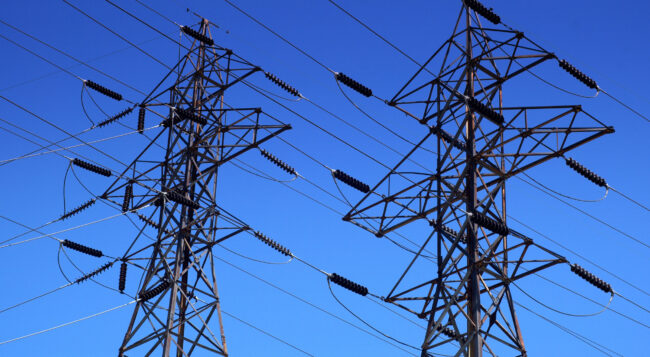Ontario faces a financing gap of $2.2 billion to $8 billion in investment needed to upgrade the infrastructure that delivers electricity directly into peoples’ homes, says a new report released today by Clean Prosperity.
Governments and regulators need to address this gap to avoid stalling Ontario’s progress on emissions reduction, as well as on the adoption of electric home heating and transport that will help Ontarians save money, and that the Ontario government is promoting.
Ahead of the Ontario fall economic statement this week, the new report, “Powering Up: Solutions for Electricity Distribution Finance in Ontario,” argues for targeted tax reforms to give municipal governments more options for investment in local electricity distribution, among other measures.
“The provincial government is rightly committed to adding lots of new electricity generation to respond to Ontario’s growing needs, but nobody’s talking about the scale of investment needed to deliver all that additional electricity to customers.”
Benjamin Dachis, report author and vice president of research and outreach, Clean Prosperity
“The provincial government is rightly committed to adding lots of new electricity generation to respond to Ontario’s growing needs, but nobody’s talking about the scale of investment needed to deliver all that additional electricity to customers,” said Benjamin Dachis, author of the report and vice president of research and outreach with Clean Prosperity.
“Right now the burden falls largely on municipalities, but they won’t be able to finance the local component of electrification in Ontario on their own without putting the costs on their taxpayers. The system for financing electricity distribution in this province has to change to give municipalities more options.”
Electricity demand in Ontario is likely to increase significantly in the coming decades as the province’s population grows, and as more people adopt heat pumps and electric vehicles.
Growing capital investment needs will put increasing pressure on Ontario municipalities, which directly own most of the local electricity distribution infrastructure in the province.
Clean Prosperity argues against municipalities covering the financing gap by increasing property taxes, raising electricity rates, or applying charges on housing developers that would lead to higher prices for new homes. These approaches are likely to put too much additional burden on a population that is already struggling with high costs of living.
Instead, Clean Prosperity’s report proposes an alternative solution to the electricity distribution financing gap: reform the tax system to encourage increased private investment.
Right now, there’s a barrier to private investment. The province collects taxes once non-municipal ownership of a local electricity distributor exceeds a 10% threshold. The provincial transfer tax in particular has outlived its original purpose, and the Ontario government should reduce or eliminate it.
To support certainty about future growth in electricity demand and help drive investment, the Ontario government should commit to decarbonizing home heating and transportation. The government should also ensure that regulators have robust practices in place to protect consumers and the public interest, and to support the growth of the electrical grid.
Once the province has taken these key steps, Ontario municipal governments should consider turning to non-municipal investment partners to help finance the build-out of electricity distribution, keep electricity costs down, and support municipal taxpayers.
Read the new report for further details on these and other recommendations designed to help solve the infrastructure financing gap in Ontario’s local electricity distribution system: “Powering Up: Solutions for Electricity Distribution Finance in Ontario.”
For more information, contact: media@cleanprosperity.ca.
Photo credit: Jonathan Lines




